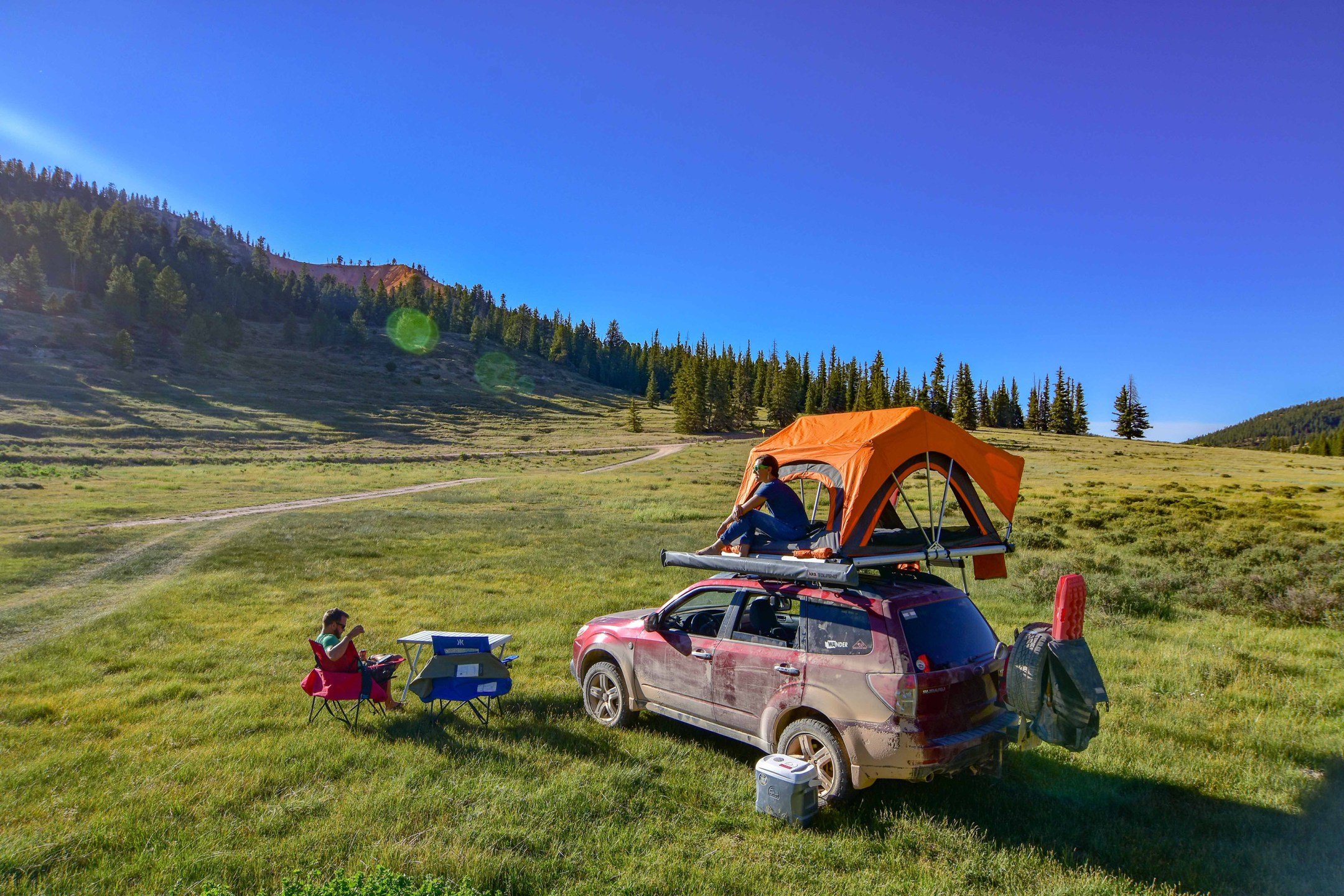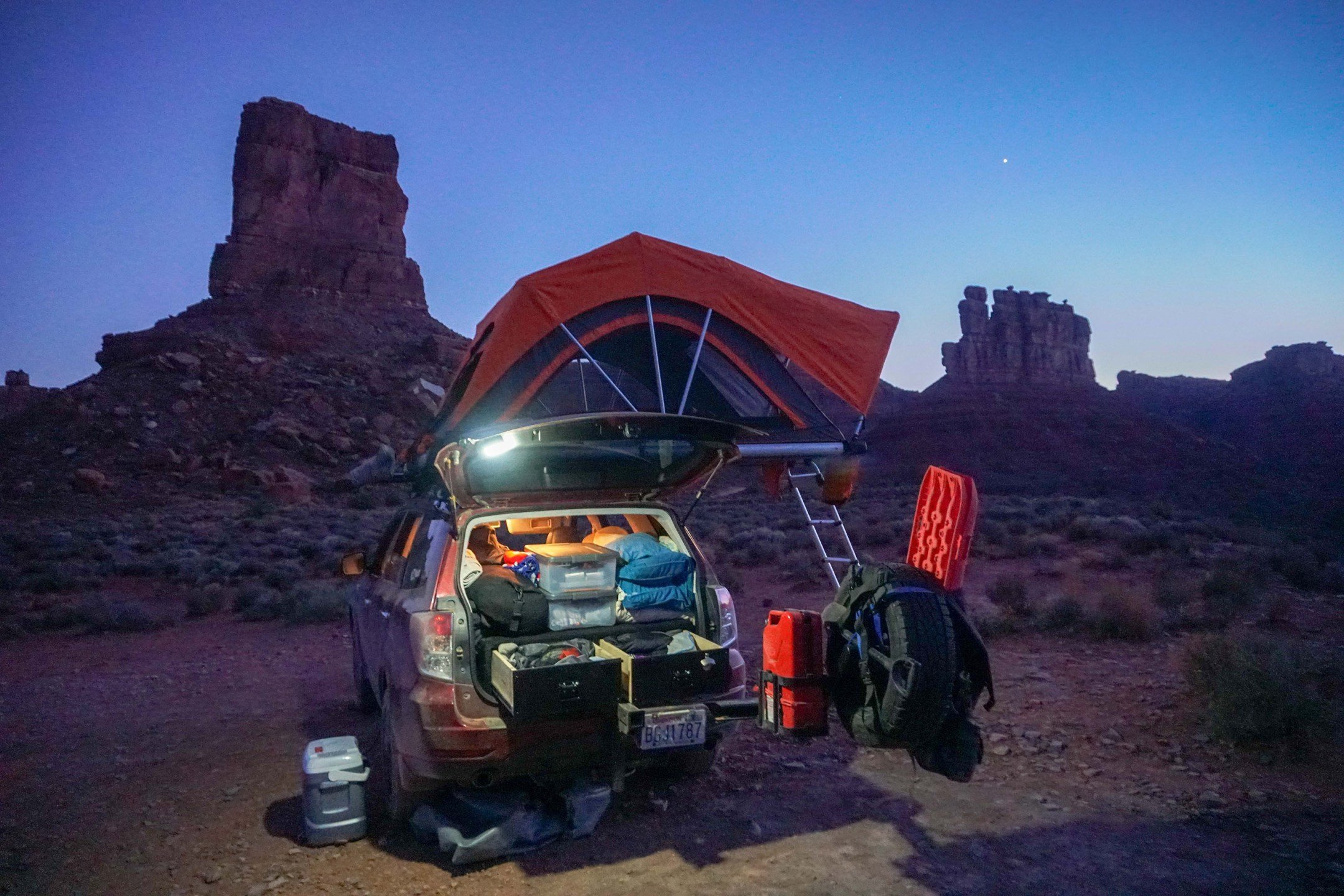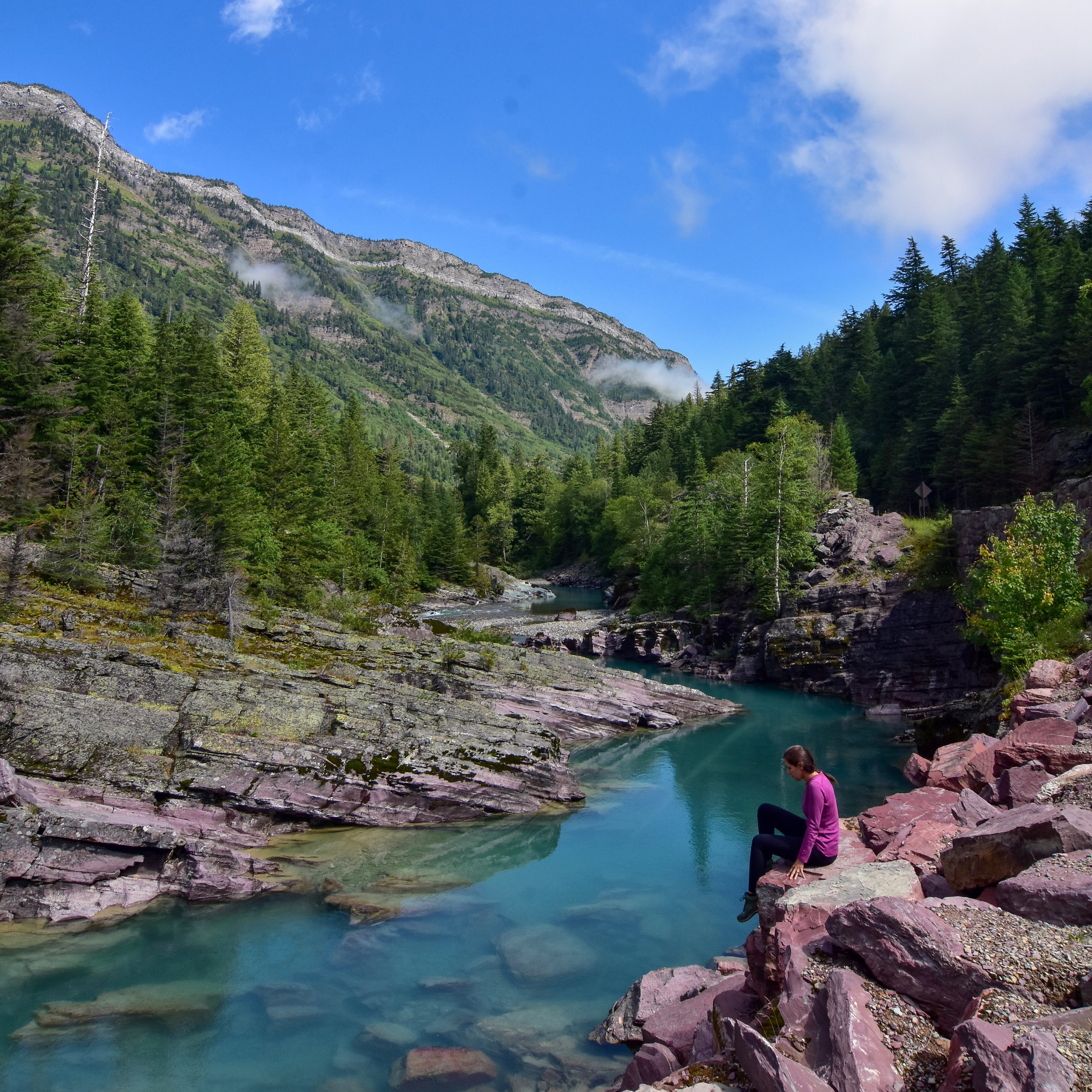Wild Camping: How to Find the Best Free Campsites in the US
Our rooftop tent is from Freespirit Recreation.
Wild camping, dispersed camping, dry camping, boondocking: Whatever you call it, it’s our preferred way to stay in the outdoors!
We love to travel off the beaten path. Especially when we’re outside enjoying nature, the last thing we want is to be surrounded by a crowd of people (no offense, other people!). When it comes to camping, that often means that paid public campsites aren’t our favorite spots to spend the night. We’re happy to forgo the amenities of group sites in exchange for having beautiful, remote, and FREE campsites all to ourselves!
But how do we find these awesome spots?
Here are our tips for finding the best free campsites in the US:
Make Use of Your Public Lands
Did you know that you can camp on almost any Bureau of Land Management (BLM) and National Forest land for free? It’s true! They’re part of America’s public lands – so they belong to you.
There are restrictions – generally you’re only allowed to stay in any one place for 14 days, and some areas have been leased out for grazing or charge a fee because they’re so popular. But the vast majority of BLM and National Forest land is yours to enjoy. (This does NOT apply to National Parks, but you’ll find that many National Parks are surrounded by National Forests – we camped immediately outside of Arches National Park and watched the moon rise over its otherworldly rock formations.)
The view from our campsite just outside Arches National Park
How do we know exactly where private lands and National Parks end, and BLM and National Forests begin? The GaiaGPS app. This app is literally EVERYTHING to us. It sets us back $30 a year, but it’s the best $30 we’ve ever spent. We took a week road tripping through Oregon and three weeks in Utah’s incredible National Parks, camping almost entirely for free on public land thanks to the maps we found on Gaia.
The app has tons of different kinds of maps, but the “map source” you want is the recently updated base source called, Gaia Topo (feet) or Gaia Topo (meters). Here’s how to get to it:
Before we leave home, we download high-resolution maps of the areas we’re planning to visit in the Gaia app on our iPad. While planning our itinerary, we look for areas that are BLM or National Forest land (the maps are color-coded so it’s easy to know at a glance where it’s legal to camp). Each day we have an idea of the area where we’ll camp that night. Once we’re ready to turn in, we head into the BLM/National Forest area and whoever’s riding shotgun keeps a close eye on our Gaia map for turnouts, side roads, pull-offs by a river – anything that looks like it might make a nice camping spot! 99% of the time we find something amazing. (Fair warning: Sometimes this process takes a while! We just put on our favorite road trip mix and enjoy the adventure.)
**Disclaimer: Don’t be a jerk! If a road appears to have been blocked off, or you see a sign that says “no camping” – move on. We’re not encouraging anyone to break the law in order to snag a cool campsite. There are plenty of sites to be had by staying on designated roads and abiding by posted signs.
The GaiaGPS app showed us BLM land in the Valley of the Gods, Utah where we found this epic campsite.
Check Camping Apps for Free Campsites
These apps have been invaluable to us! They’re essentially crowdsourcing for campsites. Exact coordinates for camping spots are uploaded to the app by actual people who’ve camped there. (Most of these apps show RV parks and public, paid campsites as well – just set your filters to only show free camping if that’s what you’re looking for).
Each app is a bit different, but generally you can see pinned campsites on a map of the area you’re searching. Click into each campsite for further details and often a photo or two, depending on how much the previous camper decided to share.
The iOverlander app led us straight to this free campsite right outside Lassen National Park
Our favorite campsite apps:
» iOverlander – (Android and iPhone) – Free! We’ve had the most luck with this one, and it shows campsites all over the world, not just the US.
» AllStays Camp & RV -(iPhone only) – $10. Has lots of sites with very detailed info. Set the rate filter to free since it will show you pay campsites as well.
» Boondocking -(iPhone only) – Free. Doesn’t have as many campsites as the other apps, but we still check it sometimes.
» Campendium (Android and iPhone) – Also free! Again, set the price filter to free sites.
Keep in mind that not all vehicles are ideal for all of these campsites! If you’re adventuring in an RV or camper van, you’ll have an easier time spending the night discreetly in a more visible area. Our bright orange rooftop tent is pretty conspicuous, so on our recent road trip down the Oregon coast we opted against staying at the pull-offs overlooking the ocean right next to the road (though we saw plenty of RVs and vans stopped there, and no signage preventing it!)
On the other hand, our offroad-ready Subaru camper can make it up more difficult terrain, giving us access to campsites many low-clearance 2WD vehicles couldn’t reach. Be honest about your car’s (and driver’s) abilities, and don’t ruin your camping trip by getting your car stuck in a rut you’ll need to be towed out of.
Also be forewarned that you’ll probably lose cell service on your way to many dispersed campsites. Most of these apps work without service, at least for the basic map function, but we often take screenshots of where we’re headed just in case.
Since we couldn’t camp conspicuously on turnouts by the Oregon coast, the iOverlander app led us to this campsite above the clouds in the Siuslaw National Forest.
Talk to Park Rangers
If you’re camping near a national park, stop by the visitors center and chat with a park ranger! They know these places like the back of their hand and will probably be excited to recommend a special spot to you.
We stopped by the rangers station at Bryce National Park and a friendly park ranger gave us a map to a series of beautiful free dispersed campsites nearby!
Many national parks are bordered by national forest or BLM land with plenty of wild camping (while the crowds are gathered at the group sites in the park that charge a fee). Every time we’ve checked with a park ranger, they’ve whipped out a map and marked their favorite areas for dispersed camping for us. We did this at Bryce Canyon National Park and ended up camping in a gorgeous meadow next to a stream, where a dozen deer grazed nearby and a hummingbird literally flew in to our tent to say hello!
Some national parks even have free campsites within the park available with a permit. It never hurts to ask!
Before You Go: A Word on Wild Camping
I assume if you’ve gotten this far, you know what it means to camp independently. But just in case, a quick reminder: You will not have the amenities of a public campsite! That means no bathrooms, no running water, no trash cans, no showers. You’ll need to be completely self-sufficient, and protecting yourself from wildlife and the elements is your responsibility.
When night falls, we’re prepared to be self-sufficient: From a solar-powered refrigerator, to extra jerry cans of fuel and water, to a legit first aid kit and traction pads in case we get stuck in sand.
Leave no trace!
Before you go camping anywhere, let alone dispersed camping on your own, familiarize yourself with the seven basic Leave No Trace principles that guide campers to enjoy the outdoors without causing harm. We’re not authorizing you to go crashing through vegetation and destroying untouched areas to make a campsite. Only spend the night in clear, flat spots where others have obviously camped before.
Just because there’s no park ranger around doesn’t mean you can start a fire any old place. I know you think you’ll keep it contained, but a spark from a campfire is one of the top five ways wildfires are started. Check fire danger levels and be certain there’s not a burn ban in place before you even think about it!
And when you leave, pack out all your trash. In fact, why not just pick up any garbage previous visitors might have left behind while you’re at it? It’s good camping karma.
Make sure you leave your beautiful campsite even cleaner than you found it!
Now go out and enjoy your public lands! And drop us a comment if you found an awesome free campsite using these tips!
You Might Also Like:
This post may contain affiliate links. If you make a purchase through our links, we get a small commission at no cost to you. This helps with the cost of keeping this site running – so thank you for clicking through! Don’t worry, we won’t recommend anything we don’t fully believe in.





















